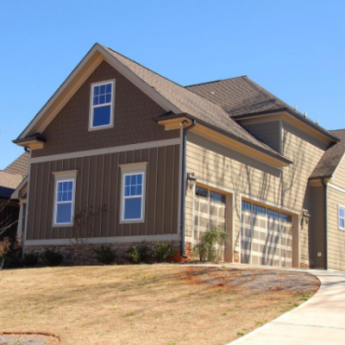How Much Do You Save With Solar Panels? A Guide for Homeowners

There are over 1.4 million solar panels installed in the U.S. alone. The future looks bright for solar owners, residential or commercial.
But what if you’re on the fence about going solar? How much can you save by installing solar panels?
That’s what we’re here to look at today. Read on to find more information about how going solar can save you money in the long run.
How Solar Panels Save You Money
So how do home solar panels save you money in the first place?
Think about it this way: installing solar panels is basically like turning your home into your own power plant. You generate your own energy and reduce the need for power grids.
By harnessing the sun’s energy and converting it to home power, you’re essentially becoming a self-sufficient source of energy. This reduces your reliance on local energy providers and makes energy cheap.
So How Much Do You Save With Solar Panels?
How much money you save ultimately depends on the cost of the energy you currently pay with your provider. It also depends on how much power your panels generate.
Geography can also play a slight factor in your savings as well. While you don’t necessarily need the glaring sun to get solar energy, direct exposure to sunlight is important and you might not get that depending on your location.
However, local electricity rates are the determining factor for how much you’ll save with solar panels. Go ahead and calculate how much you spend each year on your energy bills.
To set a benchmark, know that a typical U.S. household need about 10,000 kilowatt-hours each year. Multiplying that with the average cost per kilowatt-hour, which is about $0.13, you’re spending about $1,450 on just electricity.
Also, keep in mind that the cost of utilities can fluctuate from year to year. Energy providers adjust their rates depending on these trends, so that’ll affect your costs as well.
Cost of Going Solar
It’s no secret that solar panels don’t necessarily come cheap, but the good thing about them is that they essentially require a one-time investment. You just need a solid set of solar panels and a good installation team.
Blue Raven Solar is an excellent option for any South Carolina resident looking to install solar panels. Getting a contractor for this is crucial since you want minimal error when getting panels installed.
Solar Incentives
When asking yourself “how much do you save with solar panels,” don’t forget that there are plenty of incentives given out by the state, local, and federal government departments for getting solar panels.
Governments want more sustainability and are willing to reward you for going that path. This includes tax incentives that can lower your taxes each year.
Rebates for solar panel installation are also common in many municipalities. Leveraging these solar incentives will not only lower your energy and installation costs but also reduce your tax burden.
Remember that these incentives are active for as long as you use solar panels. As such, annual savings through solar incentives will help you save money for years, maybe even decades.
Leveraging Solar Power Savings
It’s no secret that solar panels can save you thousands of dollars each year. When asking yourself “how much do you save with solar panels,” use this guide to help you find that answer for your situation.
For more informative articles on home improvement and real estate topics, check out the rest of our site!
Top Trends in Solar Technology for 2025!
In this section, we will be discovering the top trends in solar technologies that are trending in 2024! Read on…
Bifacial Solar Panels
Unlike traditional solar panels, bifacial panels capture sunlight from both sides, making them more efficient. These panels can harness light reflected off the ground, boosting their energy output and helping homeowners save even more.
Perovskite Solar Cells
Perovskite solar cells are game-changers. They are light, flexible, and come with a lower price compared to traditional panels. This cell promises a future in which everyone will have access to solar technology.
Integrated Solar Roofs
Say goodbye to bulky solar panels! Integrated solar roofs look just like regular roofing materials but double as solar energy generators. They’re stylish and efficient, making them a popular choice for modern homeowners.
Intelligent Solar Systems
With the rise in smart home technology, solar systems are now getting smarter. Advanced monitoring systems and integration with AI will let you track your energy use and savings in real-time. It’s solar energy made simple.
Solar Battery Storage
Pairing solar panels with batteries is becoming more common. Batteries like the Tesla Powerwall let you store energy for use during cloudy days or power outages. This trend is all about maximizing your energy independence.
What To Look For In Solar Panel Providers?
Choosing the right solar provider can feel overwhelming, but knowing what to look for makes it much easier. First, check their experience and reviews. A provider with a solid track record and happy customers is a good sign.
Next, look at the warranties they offer. You want a provider who will stand behind their panels and installation for at least 20-25 years. Ask about the type of panels they install—are they high in quality and efficient?
Finally, look at their customer service. Do they answer your questions clearly? Are they transparent about pricing? A good provider will walk you through the process and make you feel confident in your decision. Taking the time to compare providers will ensure you get the best value for your investment.
Myths About Solar Panels
Solar panels have a reputation for being misunderstood. These might make you question yourself, “is solar worth it.” Well, Let’s clear up a few myths!
Myth 1: Solar panels don’t work in winter.
Not true! Solar panels work on light, not heat. As long as there’s sunlight—even on cold, cloudy days—it can generate electricity. Actually, solar panels tend to be more efficient in colder temperatures.
Myth 2: Solar panels are only for the rich.
Wrong again! With falling prices and loads of incentives like tax credits and rebates, solar energy has never been cheaper. And with many financing options available, such as a lease or a loan, it is attainable by most homeowners.
Myth 3: Solar panels require continuous maintenance.
No way! Solar panels are robust with minimal maintenance requirements—simply give them a tidy every now and then just to blow off stuff that may be on the panels or snow.
Solar energy isn’t a fad; it’s a smart, long-term investment consideration for all. Time to shine!
How to Calculate Your Solar ROI (Return on Investment)
Figuring out your solar ROI is simpler than it sounds. First, add up the total cost of your solar panel system, including installation. Next, look at your energy bill to find out how much you’re saving each month. Multiply that monthly savings by 12 to find your annual savings.
Now, divide the total cost of your system by your annual savings. That’s how many years it will take to “break even” and start realizing actual returns. For instance, if your system costs $12,000, and you save $1,200 a year in energy bills, your ROI timeline is 10 years.
After you break even, your system keeps saving you money, boosting your ROI over time. Don’t forget to factor in incentives like tax credits—they can shorten the payback period and make solar even more worthwhile. It’s a smart, eco-friendly investment that pays off in the long run!











Leave A Reply